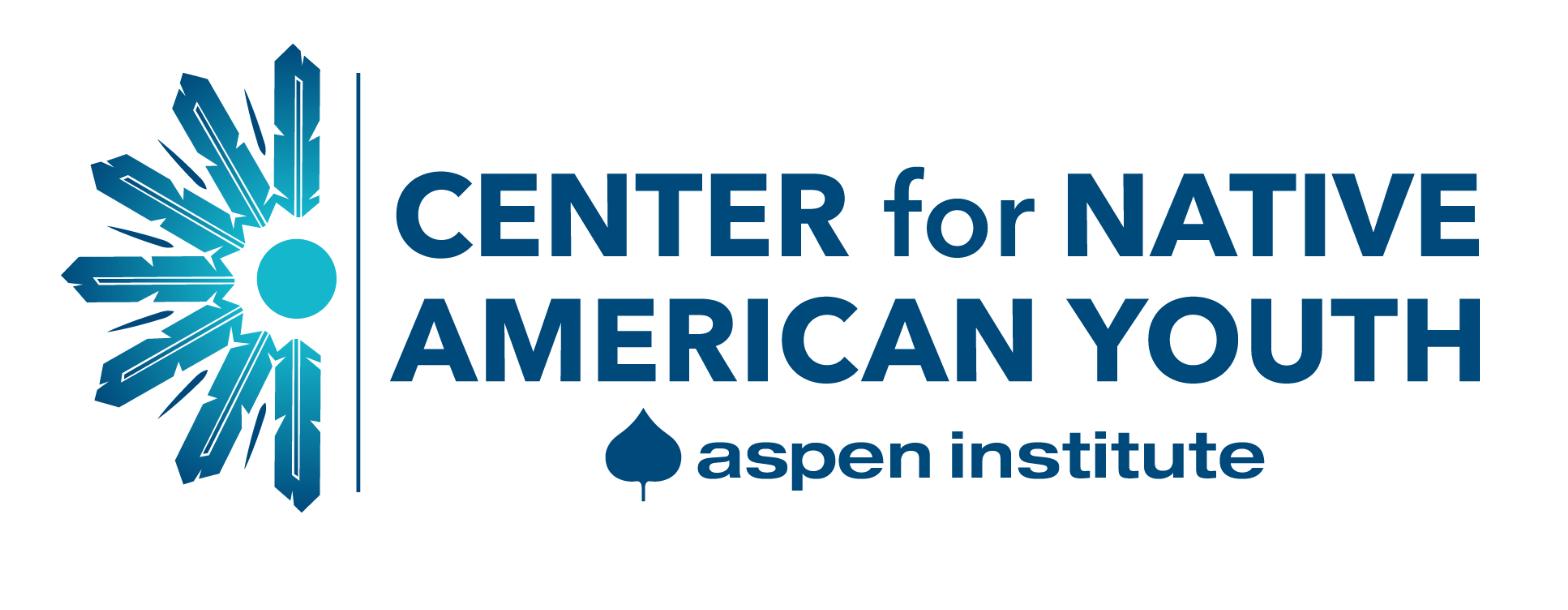On Friday, November 15, the Center for Native American Youth (CNAY), United National Indian Tribal Youth (UNITY) Inc. and White House were proud to host the fourth annual White House Tribal Youth Forum in Washington, DC. This momentous event brought Native youth from across the country together in community with federal officials and other key changemakers to discuss the most critical issues of our time.
To help foster connections between attendees from different backgrounds ahead of the Forum, CNAY and UNITY also organized a Celebration of Native Youth at Culture House DC. Oklahoma-based artist Jeremy Fields live painted a mural inspired by Indigenous medicines and the resilience of Native communities, which will live indefinitely on the walls of the venue. The night ended with many youth volunteering to share their talents with the group as well – including song, dance and spoken word.
The next day, 142 Native youth representing more than 52 tribal nations and 39 states converged at the Department of Health and Human Services (HHS) for a day of panel discussions, roundtable conversations and cultural sharing.
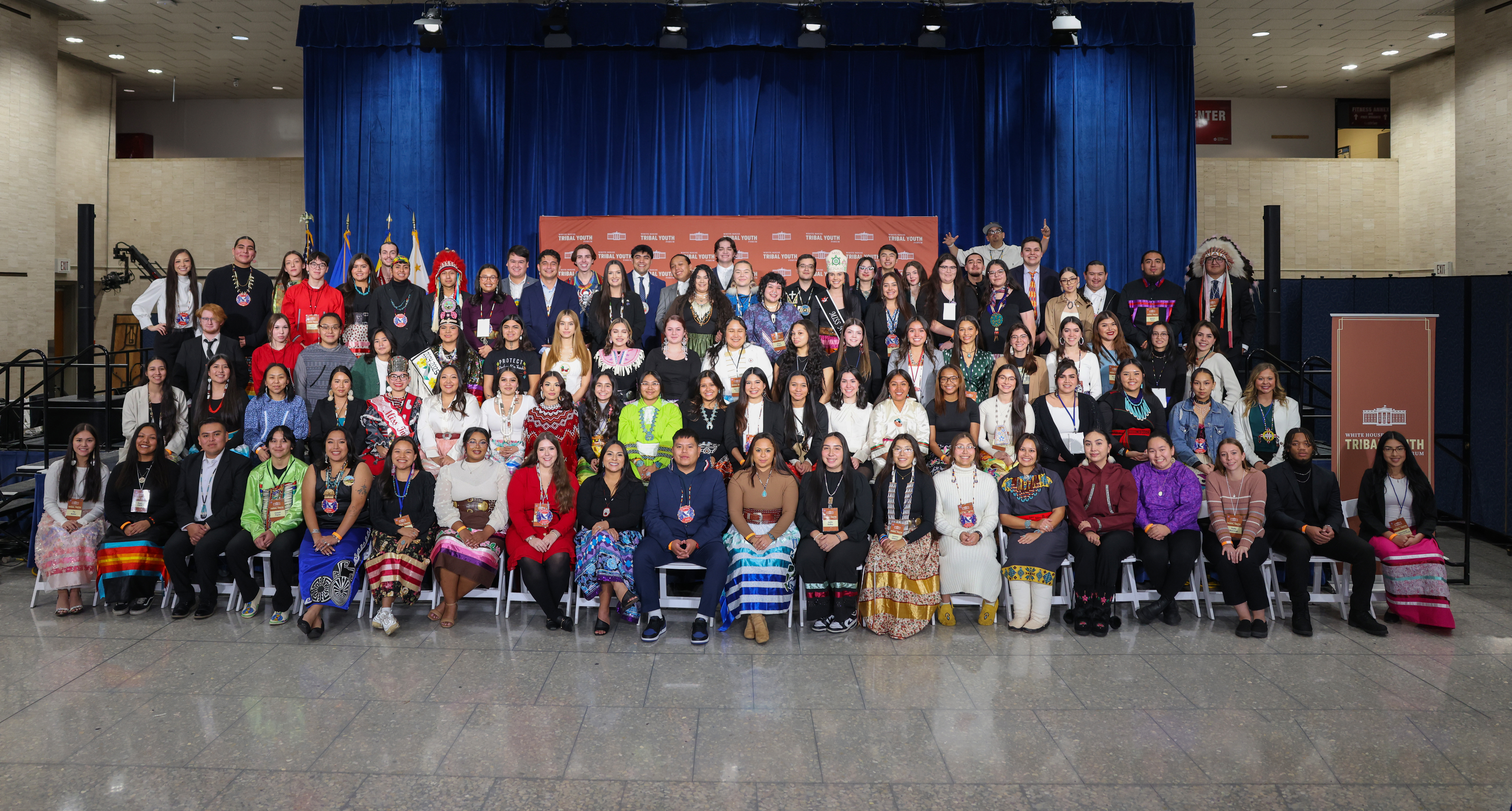
Youth emcees Angelina Hinojosa (Pinoleville Pomo Nation) and Watson Whitford (Diné Nation, Chippewa Cree Tribe) brought the crowd’s energy up as the day began with a heartfelt prayer for the future, led by Ian Teller (Navajo), and a song by invited singers Elias Her Many Horses (Oglala Lakota), Hunter Blassingame (Northern Cheyenne) and Jose Santos-McCauley (Ojibwe). Secretary of the Interior Deb Haaland (Laguna Pueblo) – lovingly dubbed “Auntie Deb” – welcomed participants with stirring remarks.
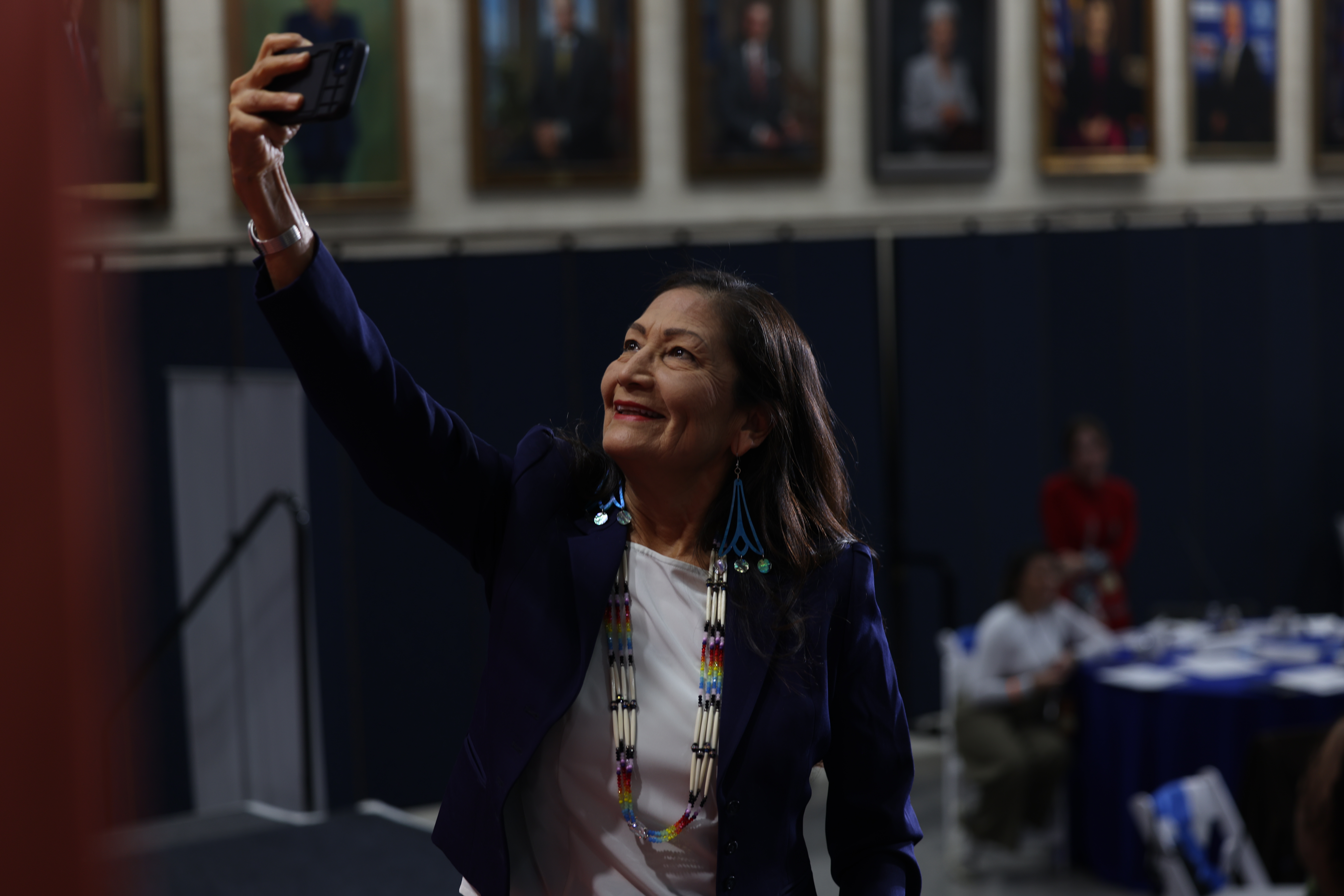
Every time I consider the impact of the decisions we make, I think about the generations to come who will have to live with those decisions. It’s young leaders like you who give me hope.
I may have broken some barriers, but I want you to know: I’m leaving the ladder down behind me for all of you to climb.
After a brief icebreaker, guided by Ignacio Taylor (Wichita and Affiliated Tribes) and Marla Mesarina (Leech Lake Band of Ojibwe, Sisseton Wahpeton Oyate), participants learned about opportunities to make a tangible impact during the first panel: The White House Internship Program (WHIP).
Jasmin Chavez-Cruz, Associate Director of WHIP, provided a comprehensive program overview, sharing that the goal of the Biden-Harris Administration is to “recruit and welcome interns that reflect the diversity of America.” Nick Thorpe, Senior Advisor for Environmental and Energy Justice at the White House Council on Environmental Quality, then shared his hopes for the next generation of public servants, emphasizing that during this “time of uncertainty, we are collectively coming together to determine who we are, who our communities are and how to build coalition.”
Youth moderators Wambli Quintana (Navajo, Cheyenne River Sioux) and Mahiya Ramirez (Muscogee) gleaned meaningful insights from the panelists about what makes a strong application and how WHIP opens doors for youth in Washington and beyond.
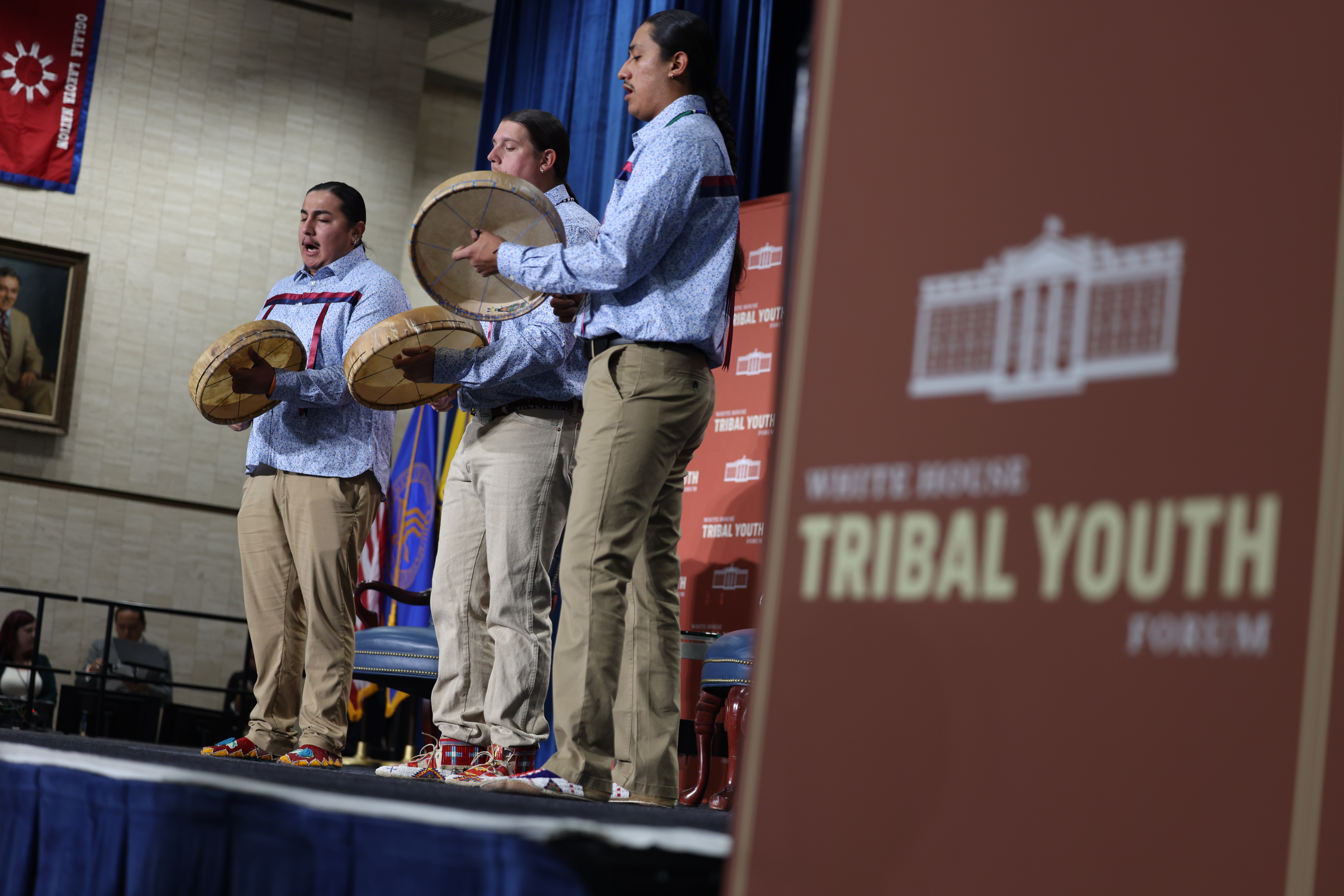
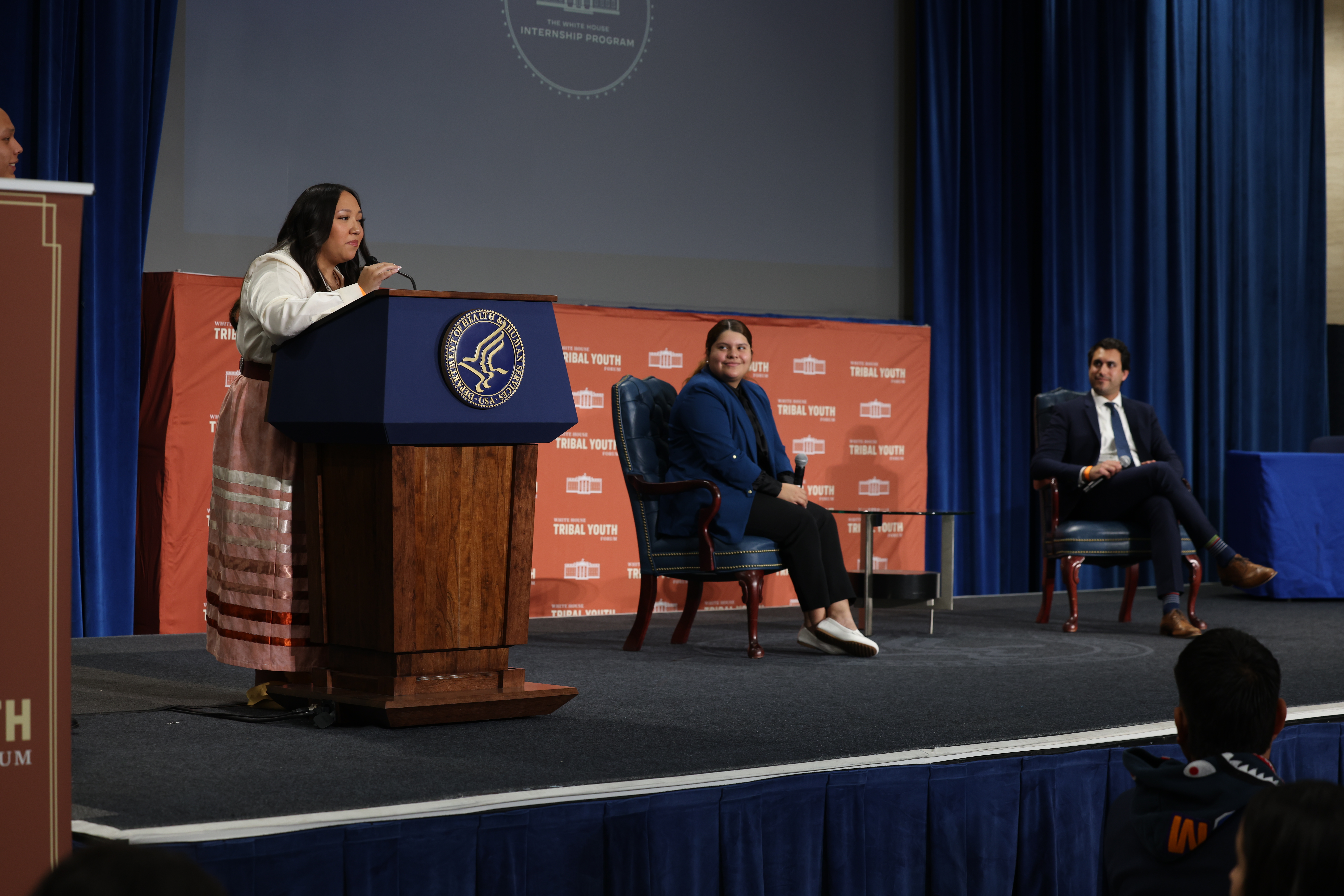
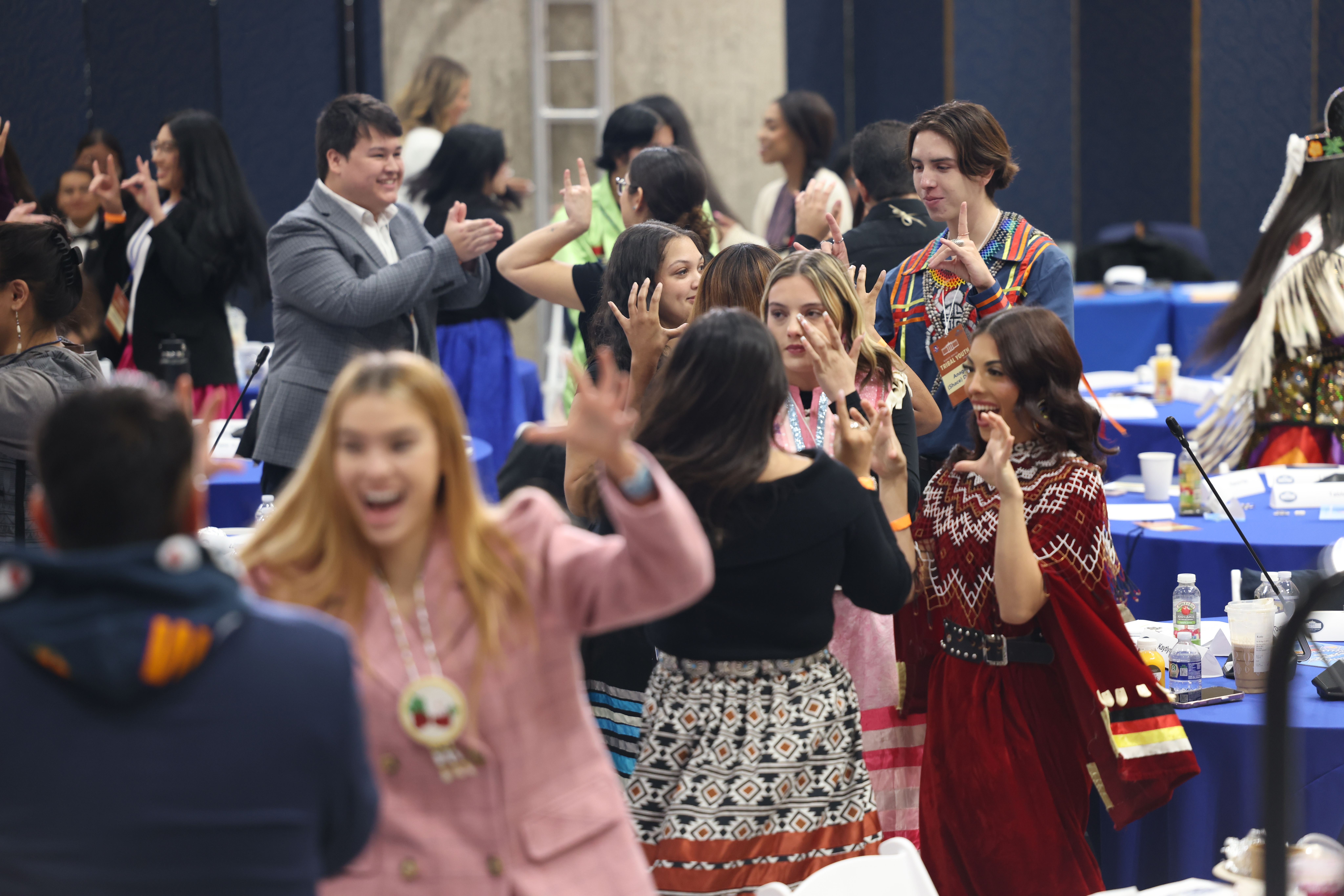
During the next session – Fireside Chat: Mental Health & Substance Abuse – Native youth moderators Sophia Madrigal (Cahuilla Band of Indians) and Mazie Countryman (Northern Arapaho, Navajo, Eastern Shoshone) took the stage alongside Sonia Chessen, Deputy Assistant Secretary of the Substance Abuse and Mental Health Services Administration (SAMHSA) and Hope MacDonald Lone Tree (Navajo), Deputy Commissioner of the Administration for Native Americans (ANA).
Youth engaged federal officials in a discussion about the unique challenges faced by Native peoples and how important it is for mental health initiatives to be culturally relevant, community-driven, and aligned with Indigenous values and traditions.
Culture can be an outlet and a protective factor. Healing comes from connection – we know the practices that create and enhance connection are going to be effective.
– Deputy Assistant Secretary Chessen
Deputy Commissioner MacDonald Lone Tree emphasized that ANA grants to help with economic diversity and maintaining holistic healing practices are flexible and community-based. “Any one of your ideas could be brought to fruition,” she said. “Whatever is appropriate for your community, ANA grants are a perfect place to get started.”
Next, Sophia Turning Robe (Spokane Tribe, Paquachin First Nation, Siksika Nation) and O’Shay Birdinground (Apsáalooke) facilitated a cultural exchange among participants. Youth were encouraged to share their cultural background, traditional stories and practices, or anything else they felt was meaningful with their tablemates. Just before lunch, Emcee One (Osage, Potawatami, Delaware, Puerto Rican) – who served as the Forum’s official DJ – invited youth to join him onstage for an impromptu fashion show, showcasing their diverse traditional regalia.
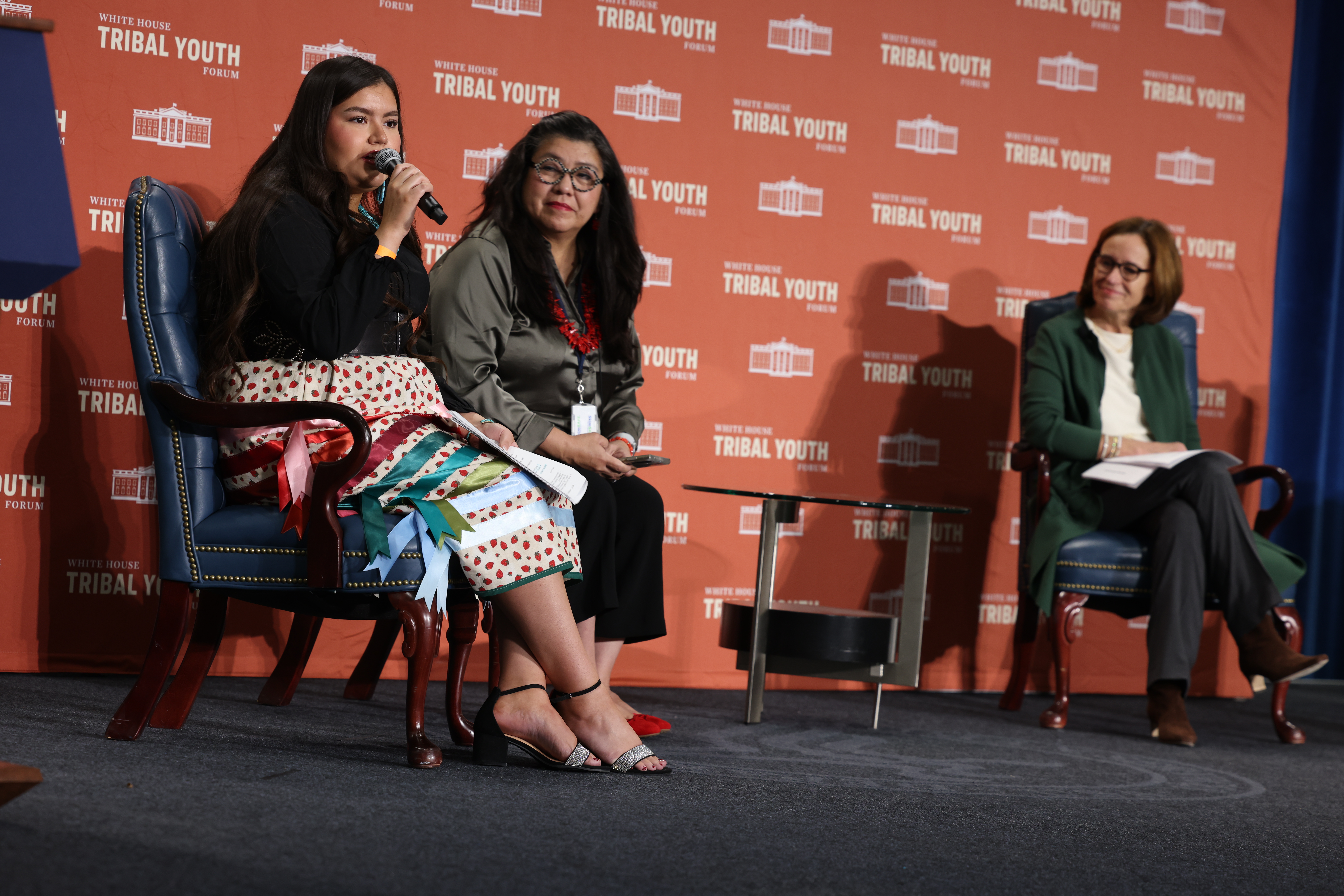
Substance Abuse
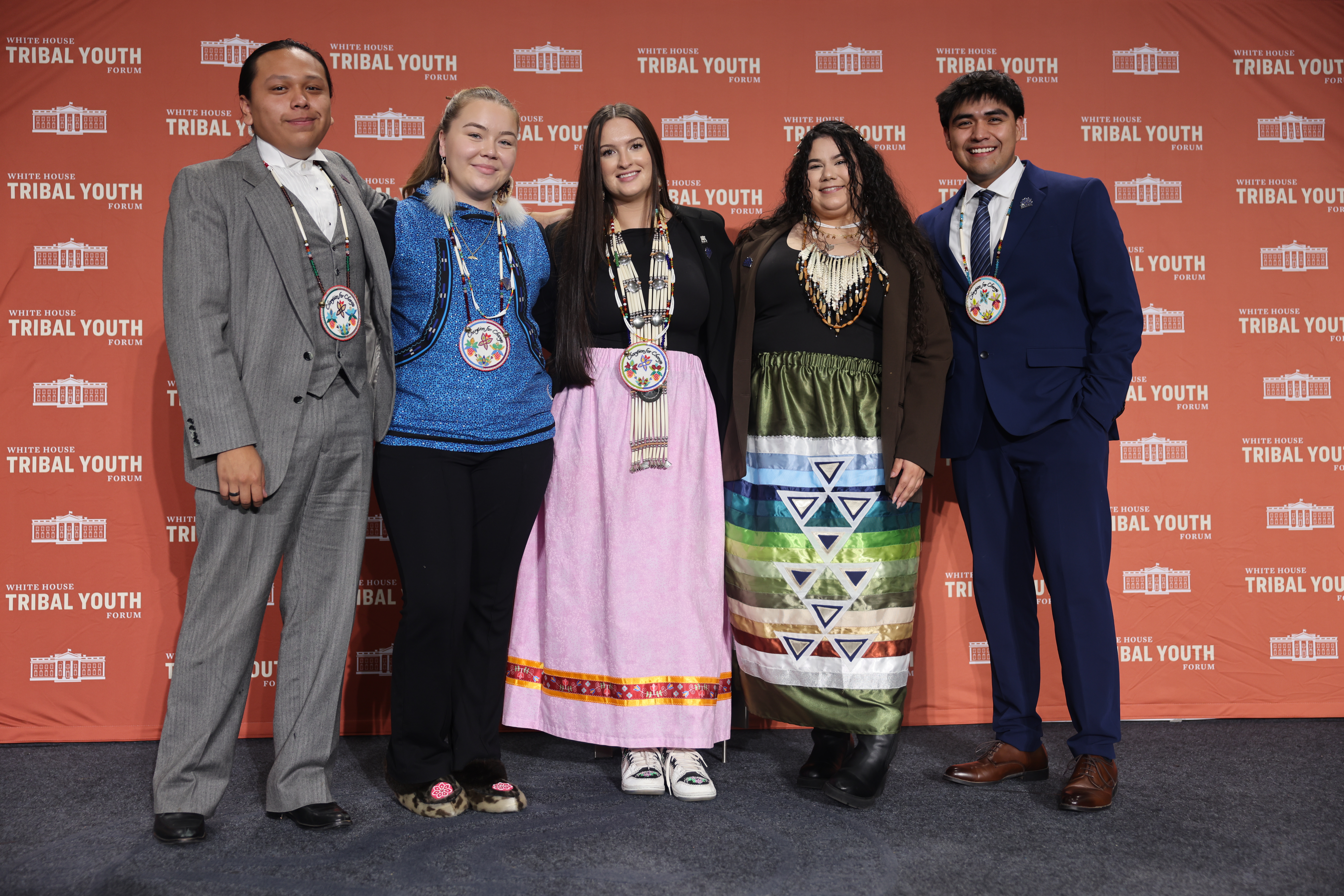
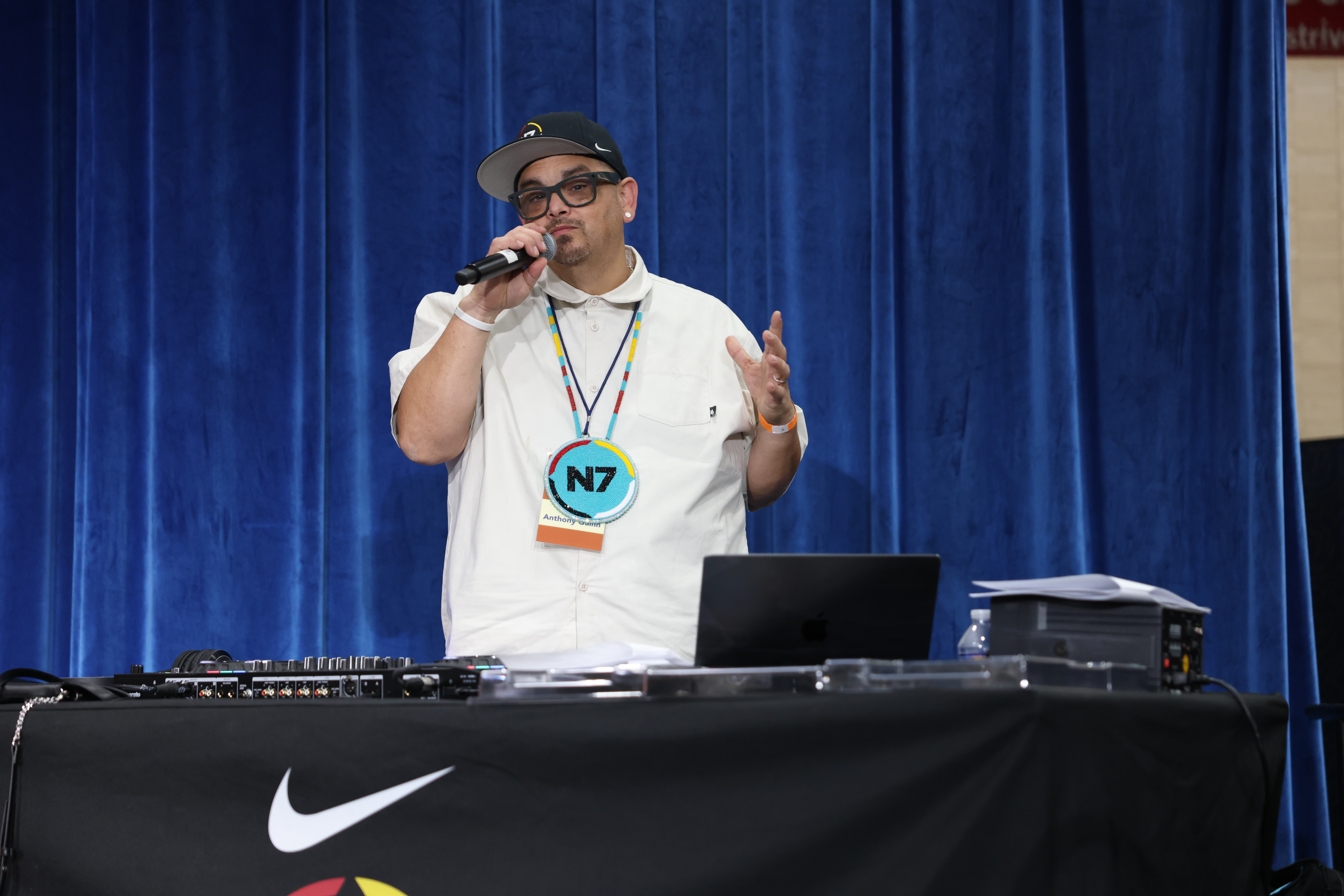
Youth emcees Ramiro Medina (Winnebago Tribe of Nebraska, White Earth Band of Chippewa, Mexican) and Kaytlynn Johnston (Paiute) brought the group back together and introduced the first afternoon session – Remarks & Roundtables: Food Sovereignty. Secretary of Agriculture Tom Vilsack began by addressing attendees, reinforcing the importance of food sovereignty in tribal nations.
Food is indeed culture. The traditions we hand down from one generation to another really inform how we eat, how we prepare it, how we share it and – most importantly – how we celebrate it.
– Secretary Vilsack
Gabriella Nakai (Choctaw, Navajo) and Derek Capitan (Laguna Pueblo, Navajo) then introduced eight federal officials from the U.S. Department of Agriculture (USDA) who went on to meet with smaller groups of youth to discuss the topic at hand. They encouraged youth to be open and honest about their experiences, echoing Secretary Vilsack’s sentiment that “in this room, you have access to the people who can make change happen!”
Participating officials included: Josiah Griffin, Program Analyst, USDA Office of Tribal Relations; Jeff Harris, Program Analyst, USDA Office of Tribal Relations; Hunter Henderson, Chief of Staff, USDA Farm Service Agency; Betsy Rakola, Acting Director, USDA Office of Tribal Relations; Reed Robinson, Director, USDA Forest Service Office of Tribal Relations; Taylor Schad, Program Analyst, USDA Office of Tribal Relations; Lawrence Shorty, Director, Tribal Colleges and Universities Program, Office of Tribal Relations; and Rudy Soto, Director, USDA Intergovernmental and External Affairs.
Youth subsequently shared a brief overview of what was discussed in their groups, including food deserts, the impact of climate change, lack of exposure to food sovereignty programs, forest management, and the proper way to work with – not against – fire and water.
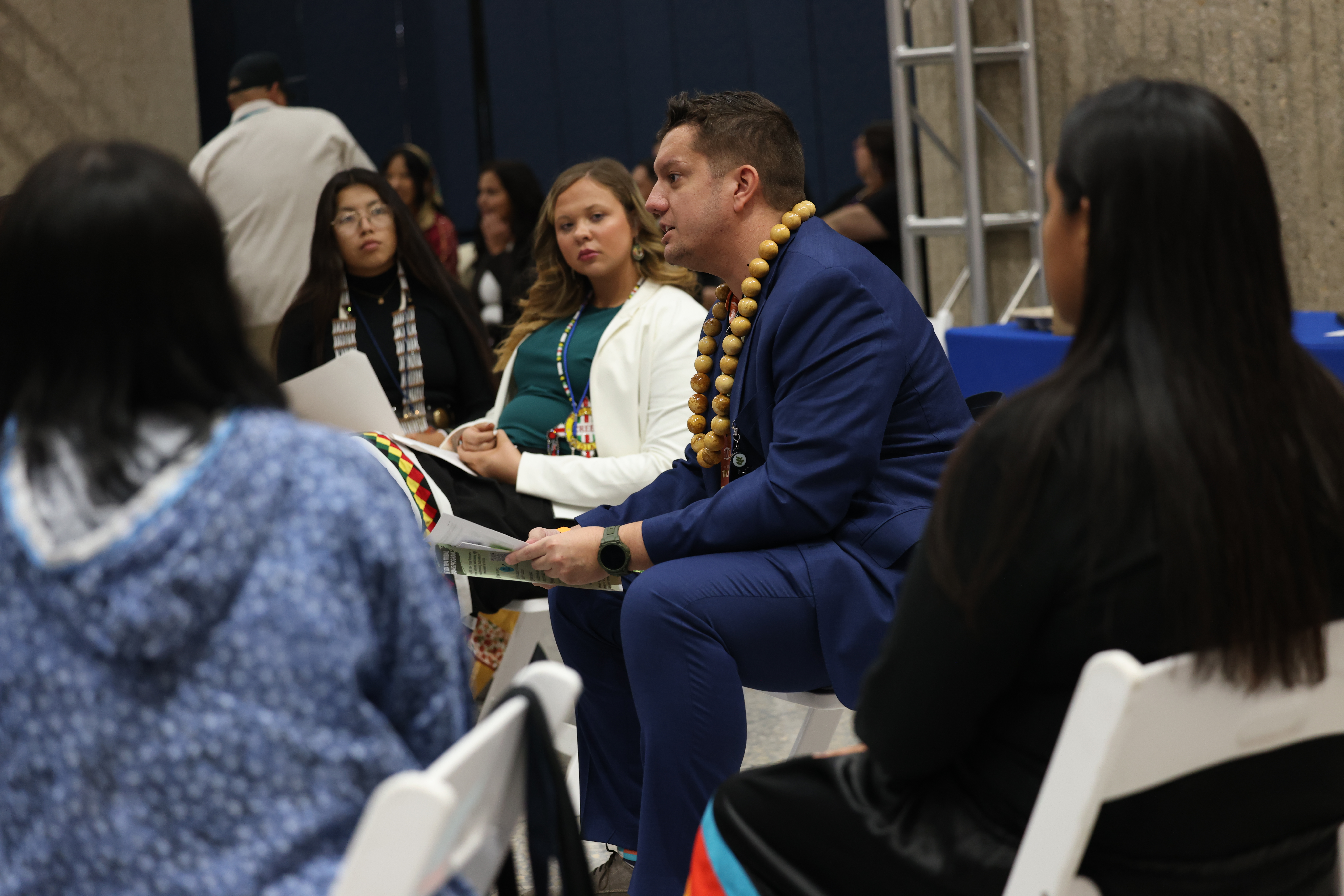
Food Sovereignty
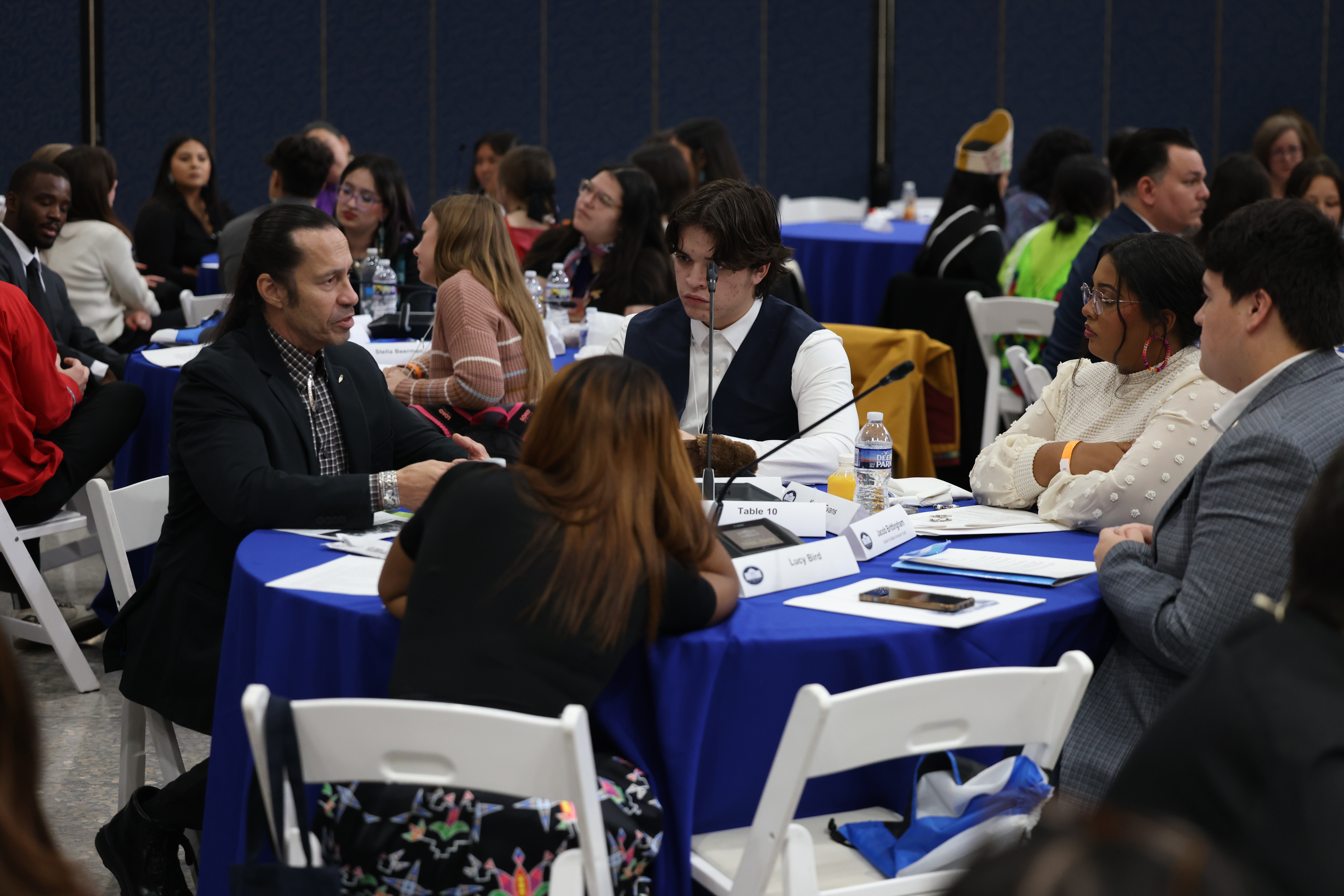
Food Sovereignty
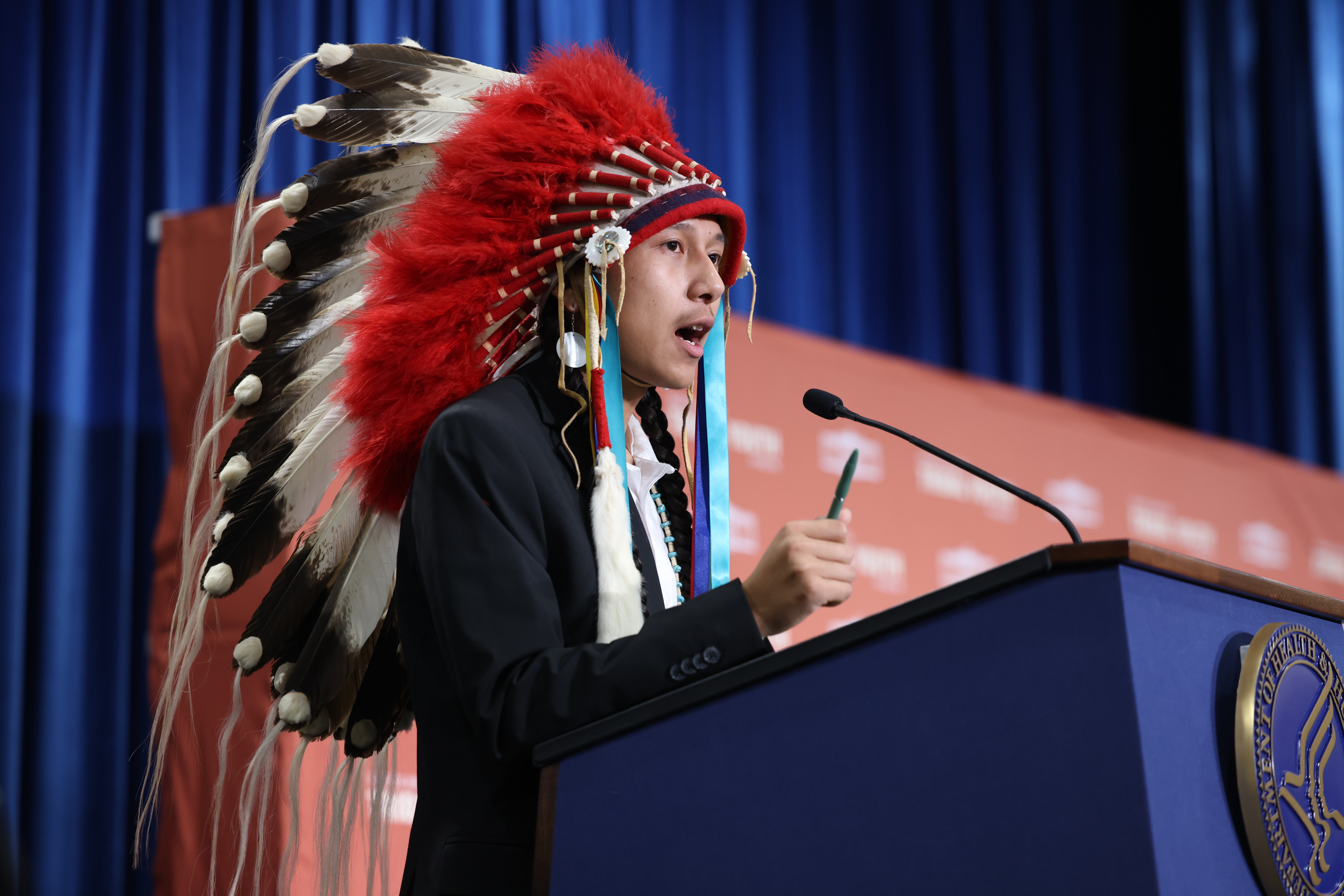
After Anthony Tamez-Pochel (Saulteaux, Sicangu Lakota, Black) led the room in a grounding activity – bundle creation with medicines grown from his home community in Chicago – McKaylin Peters (Menominee, Oneida, Forest County Potowatomi) and Mariah Hernandez-Fitch (Houma) moderated the next panel: Missing and Murdered Indigenous People.
Assistant Secretary-Indian Affairs at the Department of the Interior, Bryan Newland (Ojibwe), Senior Advisor to the Assistant Secretary at the Department of the Interior, Tracy Canard Goodluck (Oneida, Mvskoke Creek) and Director of the Office of Tribal Justice at the Department of Justice (DOJ), Daron Carreiro (Chickasaw) came together to discuss the findings and recommendations outlined in Not One More, a new report published by the Not Invisible Act Commission (NIAC).
The panelists emphasized the importance of inter-agency and tribal collaboration, increased funding for public safety and mental health resources, and the importance of having “hard and honest conversations.”
By the time you’re sitting on this stage, we’ll be riding off into the sunset of our careers, so it’s really important to build relationships with each other now. Treat each other with respect and kindness.
– Assistant Secretary Newland
Canard Goodluck echoed the importance of collaboration: “A lot of these issues can be exacerbated in Indian Country when we’re not talking, not coordinating.” She went on to praise the diversity of voices on the NAIC: “every single commissioner brought heart, passion and expertise,” for which she is grateful.
In response to an insightful audience question about the recognition of Indigenous Justice by the U.S. government, Carreiro assured youth that the DOJ supports culturally-competent justice systems and victim services. “We consult with tribal nations and tribal leaders to talk about this very issue. When we award money, it goes straight to tribal court and the way they want to use it.” Other youth questions touched on the dangers of extractive industry “man camps” and the unique challenges faced by Alaska Natives.
The panel concluded with a memorial song honoring those who have been lost and a rousing call to action from the youth moderators: “Even though there isn’t a lot federal officials can do, there is a lot WE can do. Take these conversations to your youth councils, your tribal councils. Don’t forget about this conversation and don’t forget about our Missing and Murdered.”
Next, Olivia Chase (Hoopa Valley Tribe, Tnsungwe) and Anagali Duncan (Cherokee) introduced the final session of the day – Remarks & Roundtables: Climate Change. Chair of the White House Council on Environmental Quality, Brenda Mallory, started the session by detailing the exciting climate-related achievements of the Biden-Harris Administration.
Before sending youth into their breakout groups with federal officials, Chairwoman Mallory quipped how much she loves youth events because she can sense “more energy and dedication to making change.”
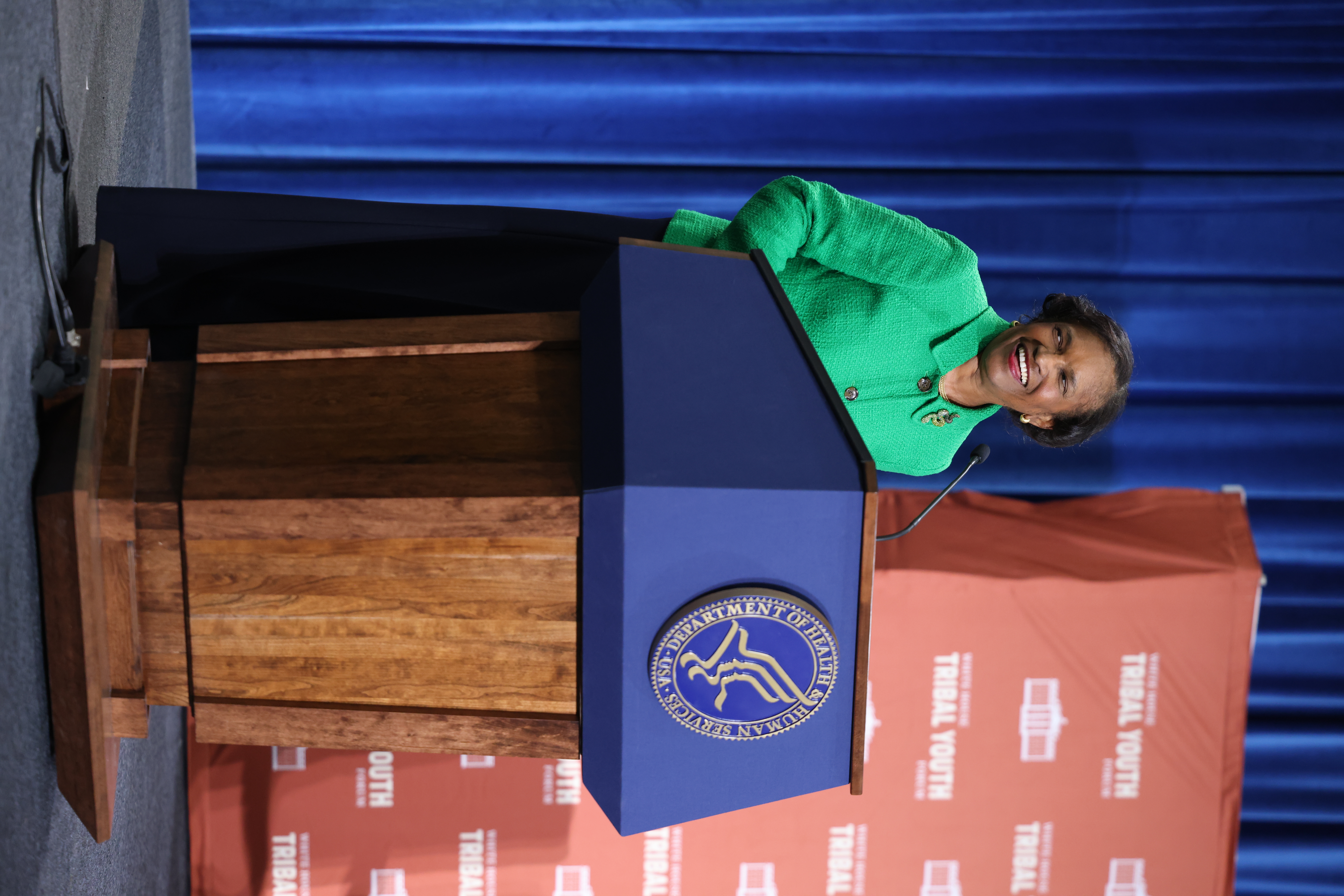
Participating officials included: Sally Hardin, Senior Advisor, White House Office of Clean Energy Innovation and Implementation; Stephenne Harding, Senior Director for Lands, White House Council on Environmental Quality; Kelbie Kennedy, National Tribal Affairs Advocate, Federal Emergency Management Agency (FEMA); Zach Penney, Senior Advisor to the Administrator, National Oceanic and Atmospheric Administration (NOAA); and Morgan Rodman, Senior Policy Advisor for Native Affairs, White House Domestic Policy Council.
In conclusion, youth volunteered highlights from their individual discussions, including resource allocation for natural disasters, food sovereignty, government-imposed infrastructure, animal migration, deforestation and the interconnectivity of social and climate issues. As one youth noted: “Indigenous people weren’t present when policies were made and laws were passed. But now we have a voice and we have to use it!”
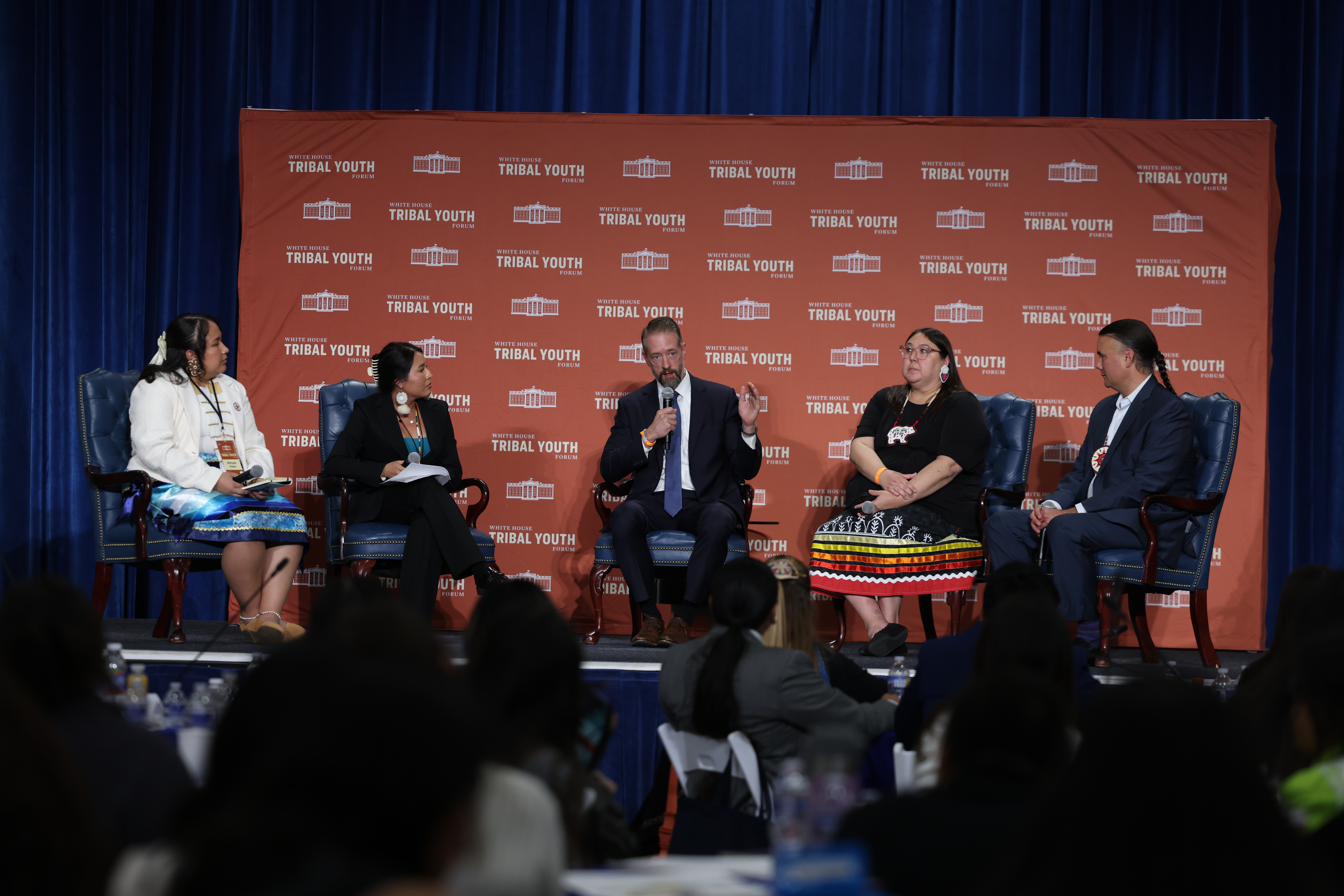
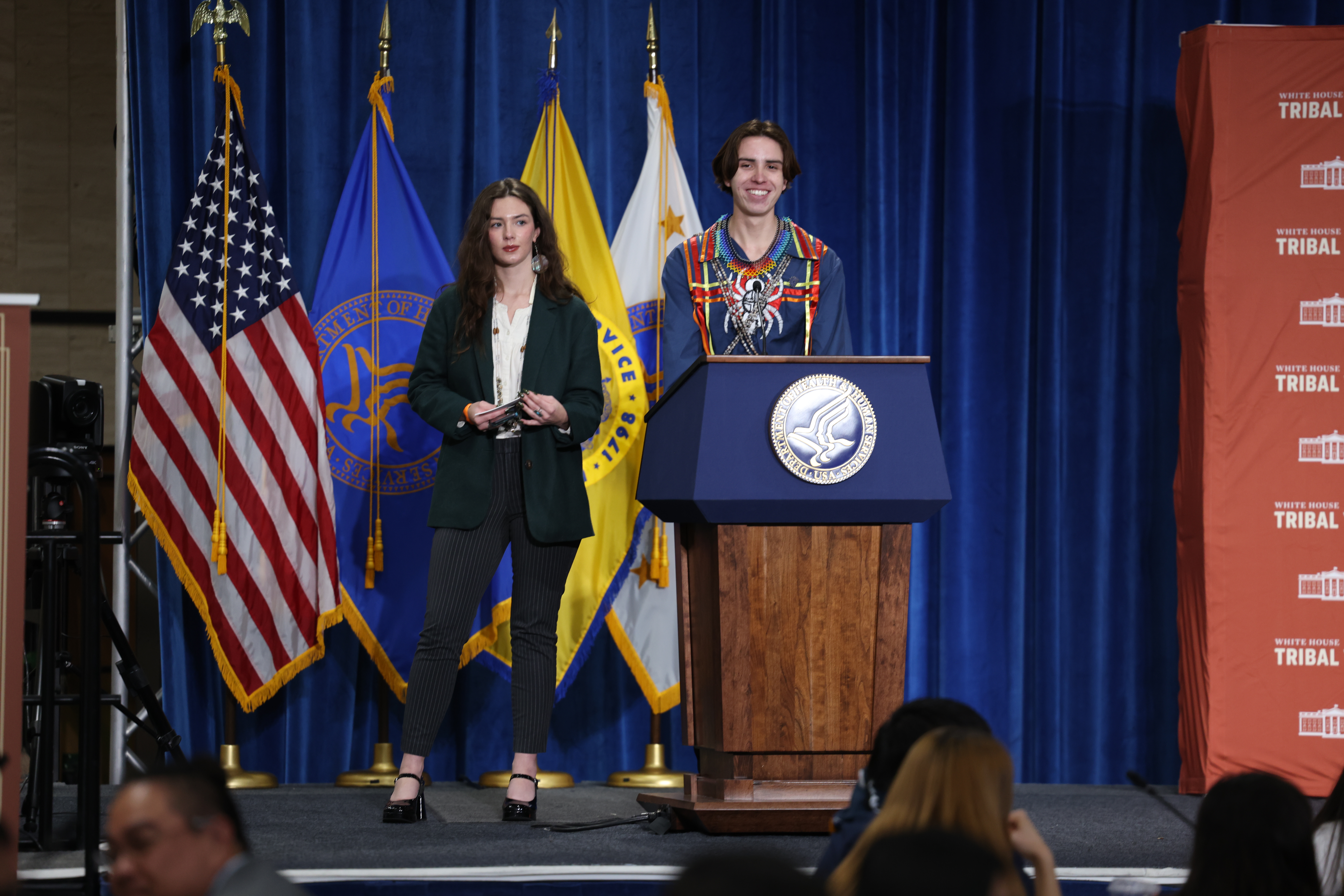
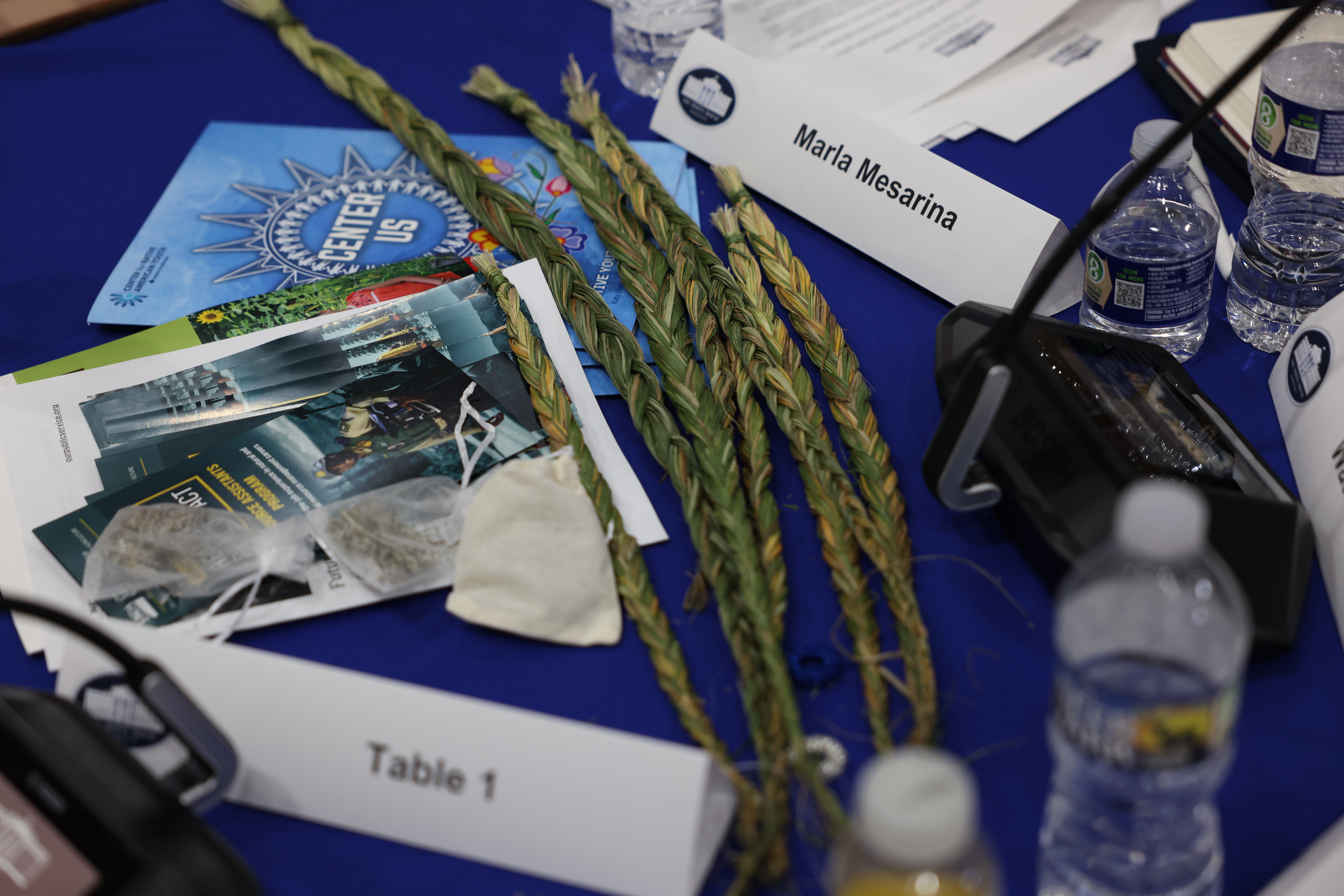
To close out the event, youth were invited to the stage to share their experiences and reflect on the day. Many shared in their gratitude for a space where they were uplifted by other Indigenous leaders. Despite challenges, youth felt empowered by one another and the collective healing journey they were on. They felt the pride of the ancestors who came before them and excited for what could be accomplished by the next generation.
Andrea Palm, Deputy Secretary of the Department of Health and Human Services, encouraged youth to remain mindful of their health and well-being and to continue to use their collective voice for good at every opportunity during her poignant final address.
You belong at these tables, you will grow up to fill the spaces of the people you look up to now and, hopefully, some of you will be inspired to serve your communities in ways that really move our [U.S. government and tribal communities] shared agenda.
– Deputy Secretary Palm
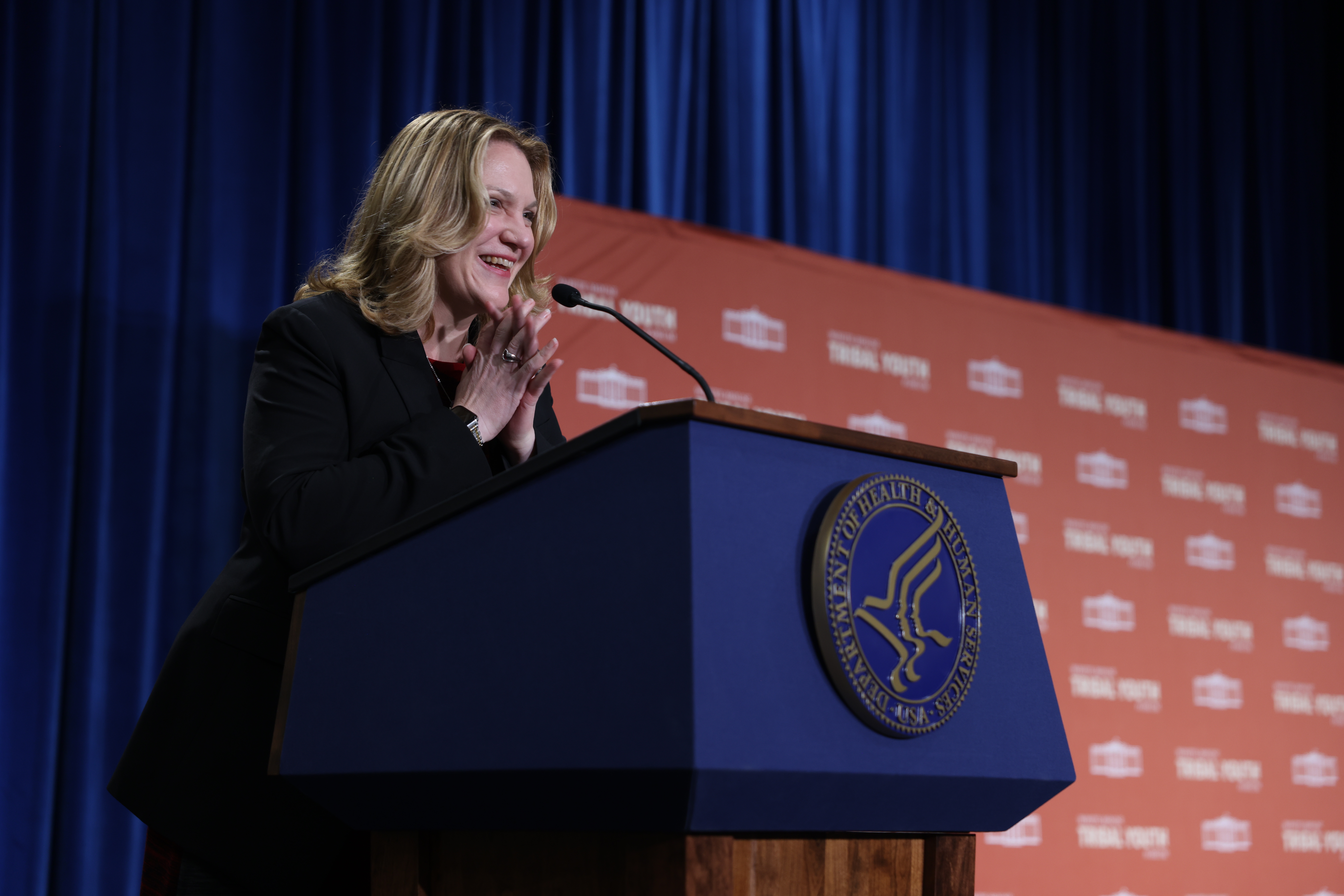
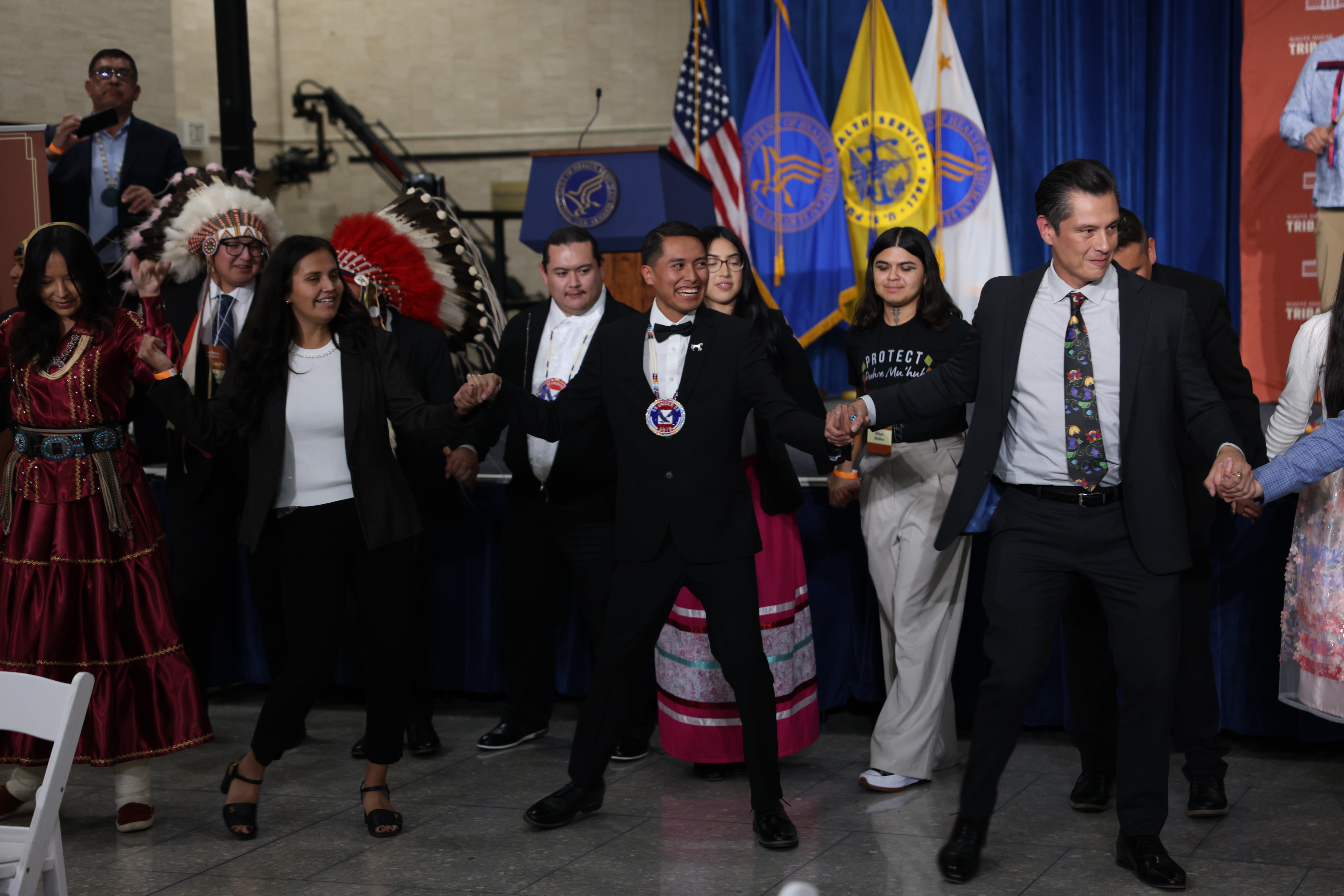

The 2024 White House Tribal Youth Forum was made possible by generous support from the Bezos Family Foundation, Casey Family Programs, the Christensen Fund, Illuminative, the National Center for American Indian Enterprise Development, the Shakopee Mdewakanton Sioux Community and Walmart.
For a full gallery of photos from the event, please visit our Facebook. Credit: Jarrette Werk.

